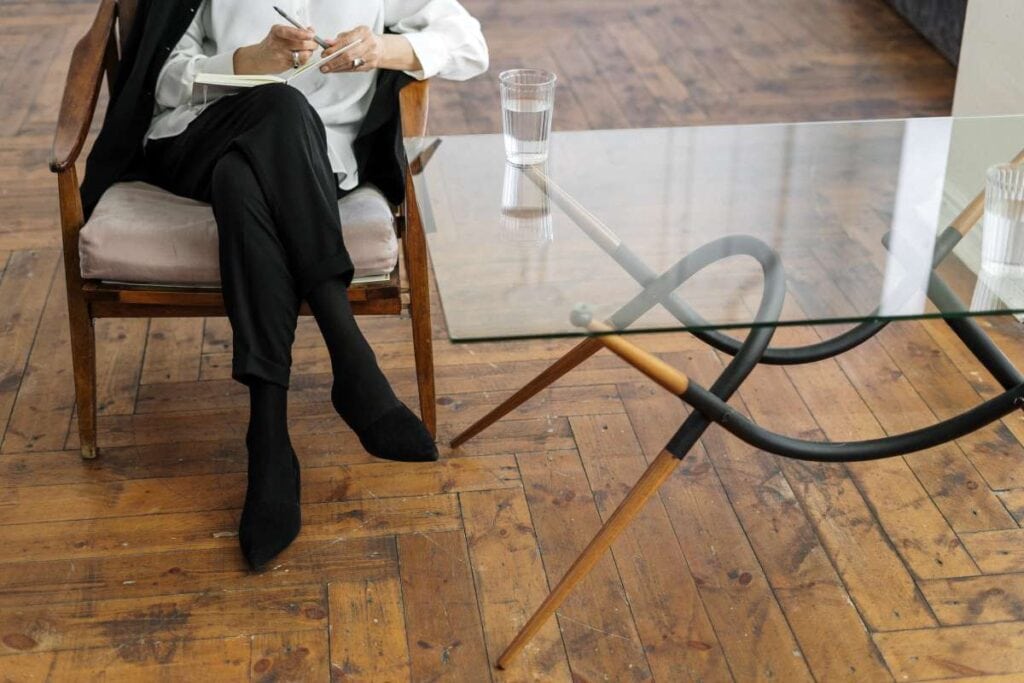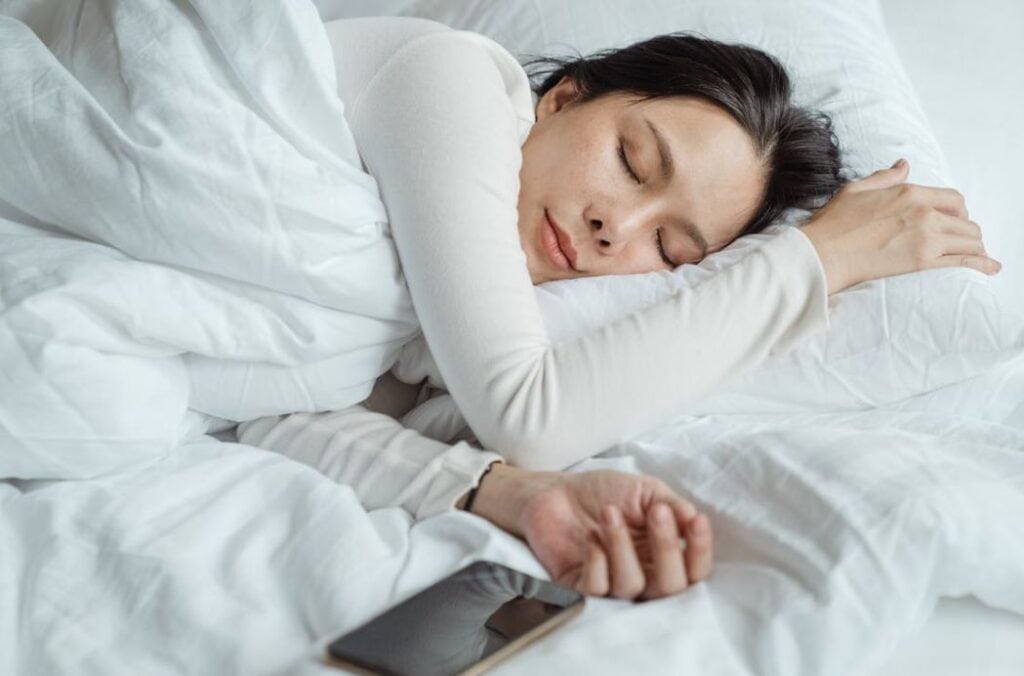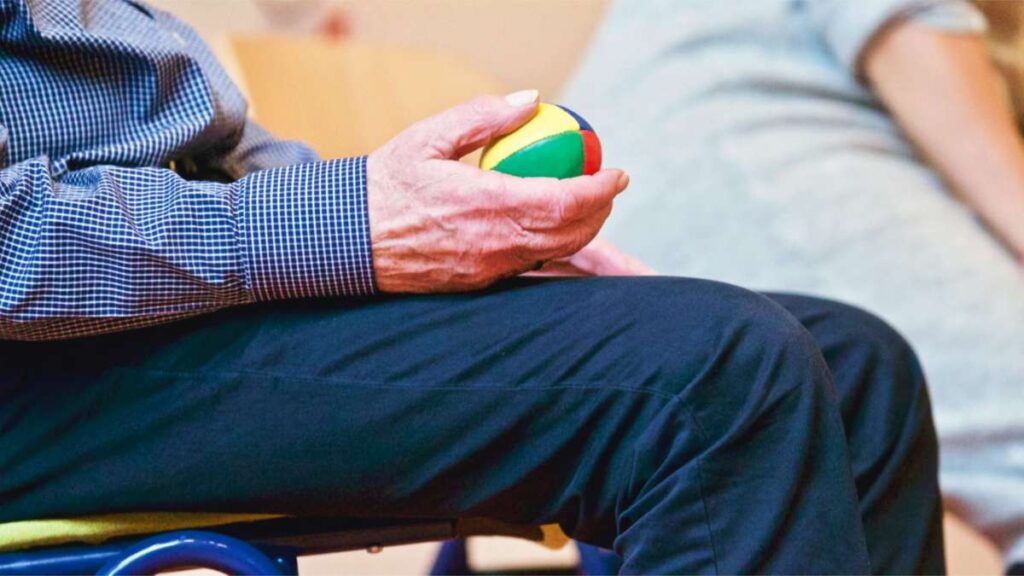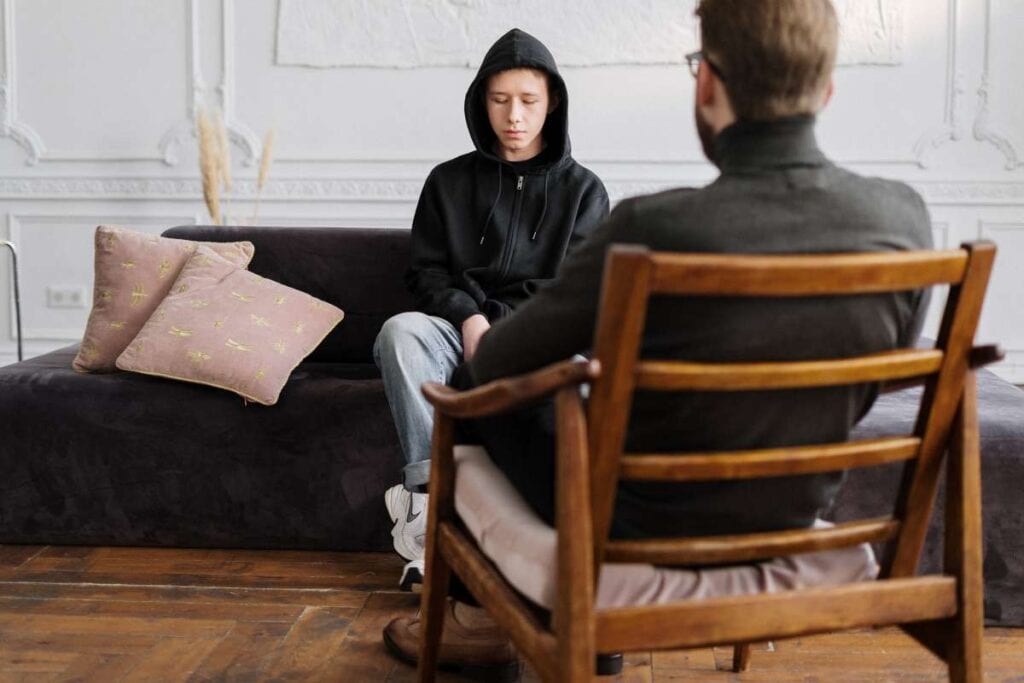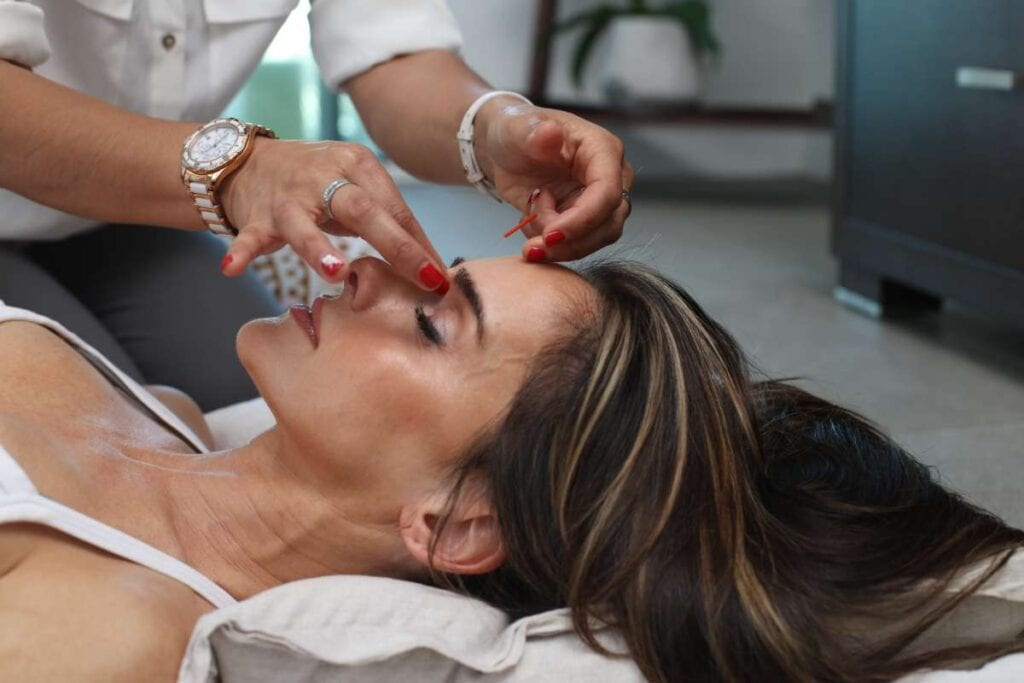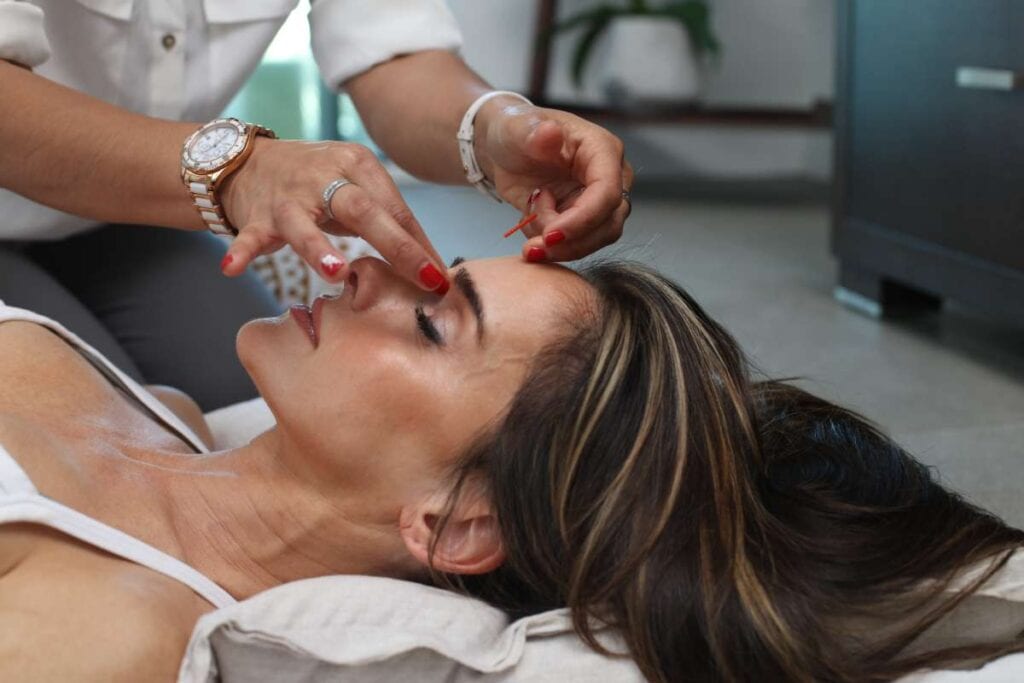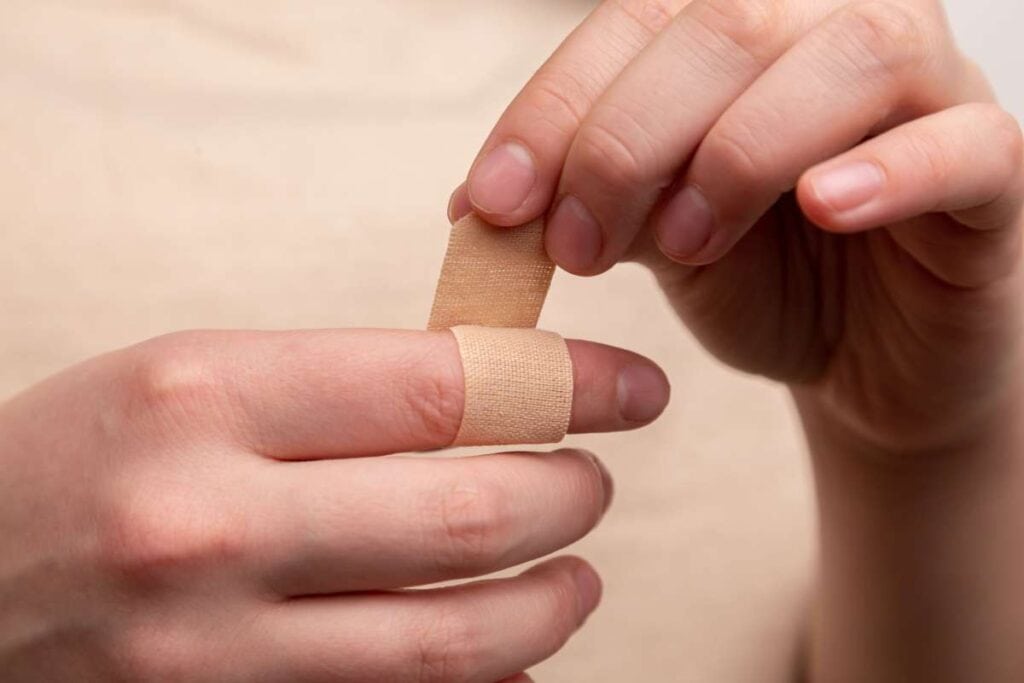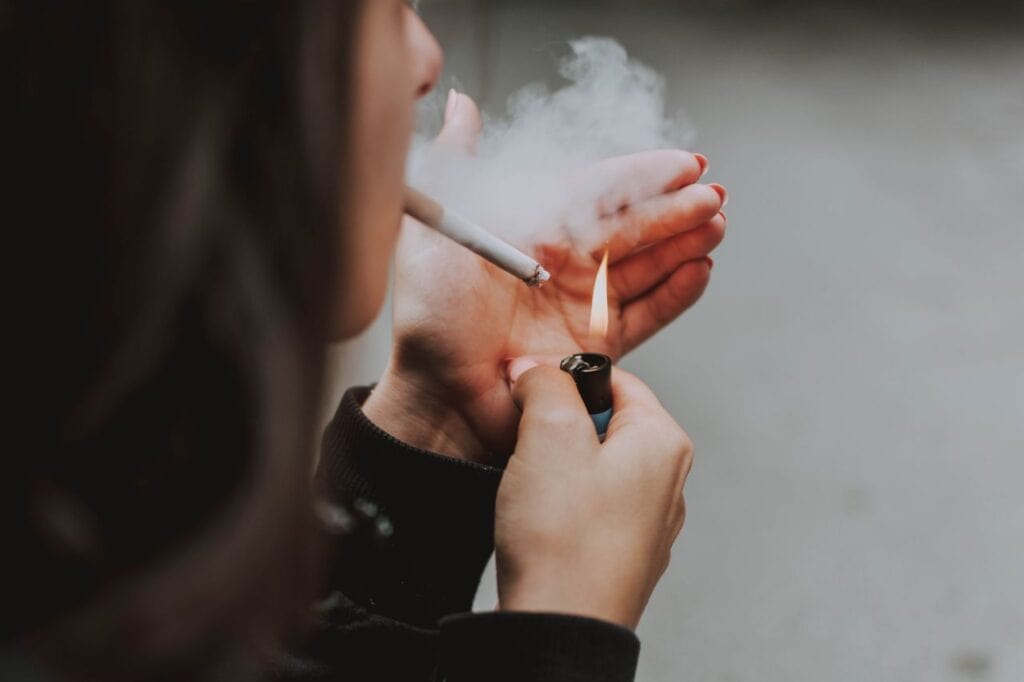If you're thinking about adopting exposure therapy as a treatment option for your anxiety or OCD, it's important to understand what the method entails (OCD).
Exposure therapy involves gradually exposing oneself to stimuli that elicit anxious sensations or a triggering event within the context of a safe and regulated environment.
Participating in this will help you manage your worries in a constructive manner. If you're thinking about doing exposure treatment, the details below are crucial background reading.
Frequently Asked Questions
A person who is undergoing exposure treatment will be put in a setting or made to respond to a stimulus that brings on sensations of anxiety or panic. They may feel less anxious and distressed as time goes on if they are exposed to their anxieties in a safe environment while they are being closely monitored.
It is generally acknowledged to be the psychological treatment that has proven to be the most effective in the treatment of anxiety and fear. Talk therapy is one form of exposure treatment. In this form of therapy, patients are encouraged to routinely address an individual or circumstance that causes them anxiety. This is done in the spirit of the phrase "face your fears," which is why it is done.
Psychologists construct a risk-free setting in which patients are "exposed" to the things they shun and want to avoid as part of this type of talk therapy. The reduction of fear and avoidance can be helped along by gradual exposure to the feared things, activities, or circumstances in a safe setting.
Exposure treatment, which is a form of cognitive behavioural therapy (CBT), is a method for lowering fear and anxiety responses. The goal of therapy is to desensitise a person to whatever it is that they are afraid of by gradually exposing them to whatever it is that they dread. This method of treatment is particularly useful for the treatment of obsessive-compulsive disorder and phobic disorders.
The treatment of anxiety disorders with exposure therapy has been shown to be successful. After completing their exposure therapy, approximately 60–90 percent of people, as stated on EBBP.org, have either no symptoms or minor symptoms of their initial disease. This is a significant improvement from before.
What Exactly Does Exposure Therapy Entail?
Patients with mental health disorders can benefit from exposure therapy, a type of treatment that encourages them to face their unreasonable fears head-on. A methodical technique involves gradually exposing the person to the triggering situation through a number of means.
The purpose of exposure therapy is to help people lead better lives by reducing their anxiety, reducing their avoidance of feared situations, and providing them with a safe environment in which to face their fears.
Mental health treatment known as "exposure therapy" is aimed at helping patients confront their fears head-on.
When people are experiencing fear, their natural reaction is to avoid whatever it is that they perceive to be dangerous.
While avoiding the source of worry may assist in the short term, it may actually make the phobia much worse in the long run. A psychologist may recommend exposure therapy to help break the cycle of avoidance and fear in such cases.
During this sort of talk therapy, psychologists create a safe space in which patients are "exposed" to the things they fear and avoid.
Exposing oneself gradually to the dreaded items, activities, or events in a safe environment can aid in the elimination of anxiety and avoidance.
Different Varieties Of Exposure Therapy
Exposure therapy has been shown to be effective in the treatment of phobias, GAD, and SAD. Exposure therapy, specifically exposure and response prevention therapy (ERP or Ex/RP), has been proven useful in the treatment of obsessive-compulsive disorder (OCD).
DeAngelis claims that ERP helps those with OCD deal with upsetting circumstances without resorting to compulsions.
DeAngelis says that stopping the compulsion or routine helps people get aware into the fact that awful things don't happen even when they aren't complying with the OCD rule.
To paraphrase the author, "This enables people to learn that terrible things do not happen, even when they are not following the OCD rule."
A illness that was once thought to be untreatable can now be managed with the help of exposure and response prevention therapy (ERP), according to a study that was published in 2015. Check this list of Rehabilitation Programmes to help you make an informed decision for your treatment.
What Do We Want To Accomplish With Exposure Therapy?
By gradually exposing patients to the things that make them feel uncomfortable or scared, exposure therapy aims to help them face their phobias head on and overcome them.
The reasoning behind this is because when a person is worried, their first instinct is to run away from their apprehension. However, this has consequences, which only serves to increase the person's worry.
A person with anxiety might, for example, have few friends because they tend to avoid social situations where they might feel anxious.
This example shows how difficult it is to avoid facing one's fears. By facing our concerns head-on, rather than trying to avoid them, we can live healthier, more fulfilling lives, as advocated by exposure therapy principles.
What Can I Expect From My Exposure Therapy Sessions?
As part of exposure treatment, a therapist will help you face your fears head-on. In vivo, imagined, and flooded exposure therapy are the three main types. Most often, people use in vivo exposure therapy.
In Vivo
In vivo exposure treatment, often known as "in life" exposure therapy, is a method of treating phobias and other anxiety disorders by gradually exposing patients to situations that would normally trigger them.
Our socially anxious client may start out by making friends with people they meet in video games, then move on to texting or calling these people, and then meet them in person. That's one conceivable outcome among many.
Imaginal
Participating in a guided imagery session in which one is asked to envision being exposed to things that may create anxiety is an example of imaginal exposure therapy.
Taking this initial step will help the person figure out what they need to do to overcome their fears.
Exposure therapy, both in the imagination and in the real world, is done gradually.
However, because the situation is imaginary, a greater sense of safety is possible than during in vivo exposure therapy.
Flooding
Unlike in vivo and imaginal exposure therapy, which both operate by gradually building up to the situation, the third type of exposure therapy is called flooding and involves quickly exposing the client to the most anxiety-provoking circumstance they can identify.
To experience flooding firsthand is to attend an event where there will be a lot of people.
Flooding is based on the premise that there is a limit to how long one can live in constant terror of a given situation.
As the person grows weary of the situation, their worry will naturally begin to lessen. It cannot be overstated how important it is to work with a therapist who has experience with these techniques.
Interoceptive Exposure
Patients undergoing interoceptive exposure therapy will experience physical sensations that are similar to those they would have during worry or discomfort. A person with panic disorder, for instance, may associate their heart rate increasing with feelings of imminent danger or fear.
An example of this would be a therapist encouraging a patient to run in place, a risk-free activity that can mimic the effects of more severe physical activity without the accompanying sense of danger.
The therapist and patient may also work together to establish a ranking system for the patient's worries and apprehensions. It entails putting a person in the kinds of situations they find most difficult.
The therapist could then decide whether or not to start with the patient's least important fear.
They may use terms like "graded exposure" and "flooding" to describe these two tactics.
Gradual, controlled exposure to progressively more stressful situations is called "graded exposure," and it involves starting in a low-threat environment.
As a result, people may gain the self-assurance that is crucial for overcoming their more major phobias.
So, if you have a phobia of snakes, you could try looking at pictures of snakes as a first step. Once you've accomplished that, you can move on to the next step, which is to have a snake in the room behind glass, and then eventually, to hold the snake.
During a flood, people are forced to confront their fears in reverse order, beginning with the most daunting.
And if that's the case, maybe they'll be able to face their very modest fears with less difficulty.
One or two sessions may be enough to resolve an issue for some people, while others will need a more sustained treatment plan with consistent therapy sessions.
Extended Durational Exposure Therapy
Prolonged exposure therapy, which involves repeated exposures, also entails the following:
- Awareness of the signs and how long-term exposure therapy can aid
- Exposure to events that have the potential to generate fear and anxiety (for instance, a soldier who has experienced the trauma of a roadside bomb in the past can start driving to get over his fear).
- In talk therapy, people share their traumatic experiences with a trained mental health professional in an effort to process the events more rationally and less emotionally.
Prolonged exposure therapy may be useful for treating PTSD and other trauma reactions.
People with phobias and anxieties may be able to overcome them with gradual, continual exposure therapy.
The course of treatment one receives can shift depending on their unique situation.
One session with a therapist would last around two hours, and the total number of sessions might be anywhere from eight to fifteen.
Techniques
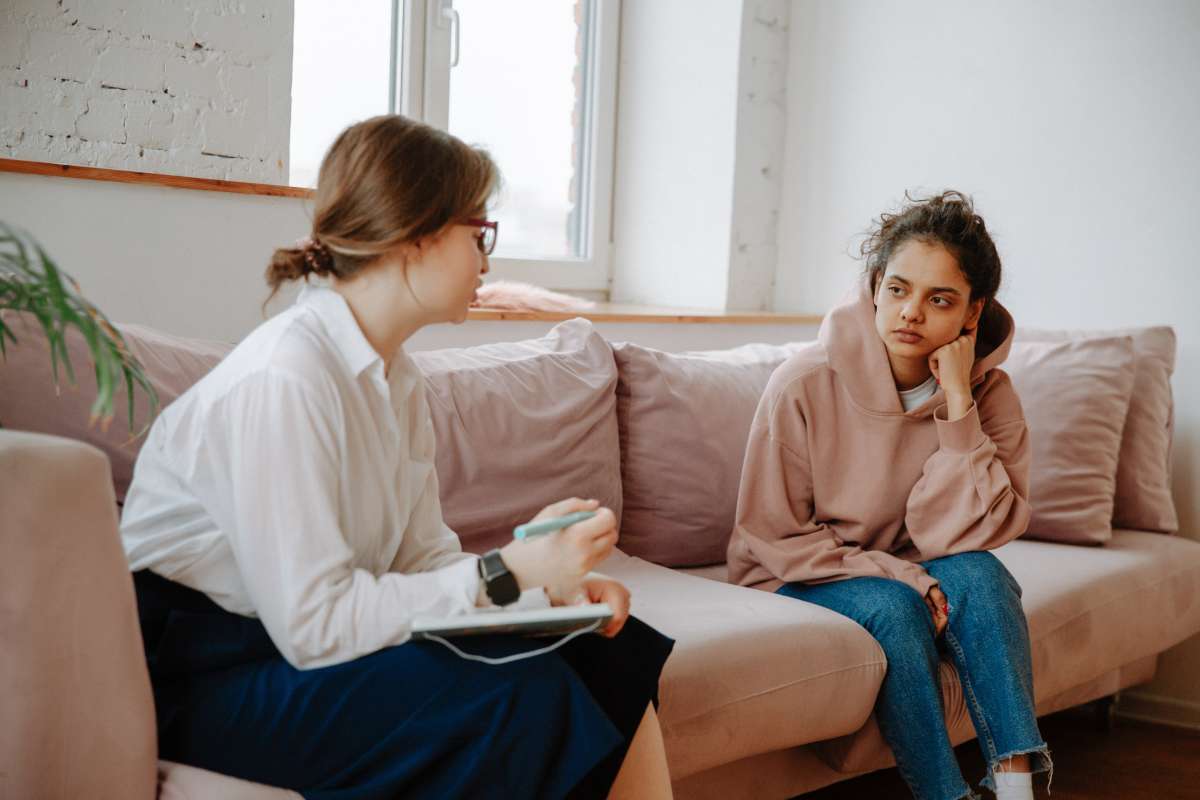
In a number of different directions, exposure treatment can develop. According to DeAngelis, a fear hierarchy or "ladder" serves as a guide for treatment and operates as a road map, and your therapist will help you tackle your fears in accordance with this.
They can help you deal with the stresses and traumas that come with having each surgery done.
- Working your way up the ladder one step at a time, graded exposure exposes you gradually to whatever it is that scares you. You may be required to view an image of a needle, keep a covered needle close by, hold a needle, etc., in order to gradually expose yourself to the object and overcome your fear of injections. The ultimate objective is for you to overcome your greatest fear, which in this case is receiving an injection.
- Desensitization through repeated exposure: For you to relax and get used to each step of this process, your therapist may employ systematic desensitisation techniques. Meditation, deep breathing, guided visualisation, and gradual muscular relaxation are all examples of techniques that can be used for this purpose.
- By gradually ascending each rung of the ladder, you might "flood" your way to success. Your therapist may suggest flooding if you are having trouble functioning normally due to anxiousness. In spite of the fact that this tactic may help you overcome your fear more quickly, you may still feel uncomfortable while in a flood. Your therapist will likely wait until your anxiety has been significantly decreased before suggesting this approach.
What Kinds Of Problems Can Be Helped By Exposure Therapy?
According to DeAngelis, exposure therapy is especially useful in the process of treating diseases that have the potential to induce anxiety.
Anxiety might cause you to exaggerate danger or discomfort and underestimate your ability to cope. This is because worry can cause you to overestimate the threat of danger or discomfort.
According to Dr. DeAngelis, "Exposure therapy seeks to address both of these issues so that you may comprehend that your anxiety will naturally lessen over time when you are confronted with an uncomfortable or scary circumstance and that you are capable of handling that fear."
Looking for the best rehab centre? Refocus Rehab Melbourne might be the answer.
Exposure treatment may be helpful in treating a variety of illnesses and anxiety disorders, including the following:
- Phobias
- Panic disorder
- Disorder of anxiety that is generalised (GAD)
- Disorder of anxiety in social situations
- The condition known as post-traumatic stress disorder (PTSD)
- OCD
Exposure Therapy's Positive Effects
The following is a list of some of the advantages that exposure therapy can provide.
- If you gradually and frequently expose yourself to the source of your phobia, habituation may cause your reaction to the object of your anxiety to become less severe over time.
- The safe setting of exposure treatment might help you realise that your dreaded situation is actually quite safe. There may be less of a causal link between the current circumstances and the gloomy outcome you anticipate.
- By participating in emotional processing therapy, you may get relief from your anxiety. It can help you feel more at peace by retraining your mind to react to whatever it is you're afraid of with more logical, fact-based assumptions.
- In the long run, exposure treatment may teach you to confront your fear head-on and learn to cope with the discomfort it causes.
Things That Should Be Considered
Exposure treatment, in which patients are forced to confront their fears, can be difficult and distressing.
DeAngelis advises patients to "feel willing to withstand difficult events or stimuli that you have been avoiding" and to "understand that the clinician's purpose is not to torture you."
In exposure therapy, "it is crucial to recognise that the purpose is not to torture you," as the saying goes. However, there are certain potential drawbacks of exposure therapy that you should be aware of.
- Potential recurrence of the original symptoms There is a chance that some people will see a return of their symptoms after some time has passed.
- There is a greater possibility of this happening if the medicine is discontinued too quickly.
- It's not always the case that simulated conditions are spot-on representations of reality. Conditions experienced during exposure therapy may not always be reflective of actual life. Consequently, a person with PTSD, for example, might be able to handle simulated conditions in a therapist's office but might not be able to cope with the situation if it presents itself in real life.
Despite these limitations, the evidence supporting the efficacy of exposure therapy suggests it should be seriously explored as a therapeutic option.
One of the problems with exposure therapy is that it is not employed nearly often enough. Many individuals with anxiety problems go untreated because their therapists lack the formal qualifications to provide exposure therapy.
Is It Possible For Me To Perform Exposure Therapy On Myself?
In most cases, a licenced therapist or other trained medical expert will oversee exposure therapy.
On the other hand, therapist-directed exposure therapy was found to be more effective than self-directed treatment in addressing OCD symptoms in a small evaluation of research that was undertaken in 2018.
Without the guidance of an experienced practitioner, people undergoing exposure therapy can unintentionally increase their level of anxiety or panic.
It is highly advised that you seek professional help if you are experiencing symptoms of post-traumatic stress disorder.
If you suffer from a minor phobia, you may find that adding elements of exposure therapy into your daily routine will help you overcome your fear.
Humans have a built-in inclination to avoid potentially dangerous situations and objects. Yet, facing your fears head-on in order to overcome them may lead to a wider circle of acceptance.
Some people, especially those with even minor social anxiety, feel uncomfortable in social events involving huge numbers of people. Attempt to force oneself to spend time in progressively more frenetic and chaotic settings.
The Potential Drawbacks Of Exposure Therapy
Research suggests that exposure therapy could be beneficial for a sizable population, however the treatment is not without some serious downsides.
Even though it has a high rate of success, many licenced therapists and counsellors avoid using it in their practises. And some doctors think that exposure therapy, which is often used to treat PTSD, can actually make symptoms worse.
Because it involves putting people in circumstances they have worked hard to avoid, exposure therapy can be difficult to administer.
Because of this, if exposure therapy is not administered properly, the treatment's positive effects may fade with time.
This is why it is crucial for patients to cooperate fully with their therapist and to do as they are told during the course of treatment.
Despite these limitations, exposure therapy has been found to be effective in producing long-term benefits for a sizable population. Furthermore, studies show that it is effective in treating anxiety, phobias, and other mental health issues.
Where Should One Begin?
First things first if you want to try exposure therapy: locate a licenced therapist, psychologist, or psychiatrist who has experience with it.
If you need a referral to a mental health expert, you can ask your primary care physician or get in touch with your state or local mental health association.
Please book an appointment with the specialist once you've found one and verify that they accept your insurance.
You will probably have to fill out some documentation about your symptoms, medical history, and insurance coverage when you go in for your first appointment.
This article will help you make a decision about Rehab Treatment Melbourne fees for different treatments.
You and your mental health professional should work together to establish a trusting relationship and determine your therapeutic objectives.
Doing so in tandem with your mental health professional is recommended.
Establishing what is called a therapeutic rapport with your therapist is crucial for exposure therapy because you need to feel safe and supported as you address your darkest anxieties.
Conclusion
Mental health treatment known as "exposure therapy" is aimed at helping patients confront their fears head-on. Exposure therapy has been proven useful in the treatment of the obsessive-compulsive disorder (OCD).
Exposing oneself gradually to the dreaded items, activities, or events in a safe environment can aid in the elimination of anxiety and avoidance.
By gradually exposing patients to the things that make them feel uncomfortable or scared, exposure therapy aims to help them face their phobias head on and overcome them.
The three main types of exposure therapy are imagined, in-person and in-life exposure therapy.
Patients undergoing interoceptive exposure therapy will experience physical sensations similar to those they would have during worry or discomfort.
During a flood, people are forced to confront their fears in reverse order, beginning with the most daunting.
The therapist and patient may also establish a ranking system for the patient's worries and apprehensions.
People with phobias and anxieties may be able to overcome them with exposure therapy.
Exposure therapy involves exposure to events that have the potential to generate fear and anxiety.
It can help you deal with the stresses and traumas that come with having each surgery done. Exposure therapy is especially useful in treating diseases that have the potential to induce anxiety.
Anxiety might cause you to exaggerate danger or discomfort and underestimate your ability to cope.
It can help you feel more at peace by retraining your mind to react to whatever it is you're afraid of.
Exposure therapy can be beneficial for a sizable population, however the treatment is not without some serious downsides.
There is a chance that some people will see a return of their symptoms after some time has passed.
It is highly advised that you seek professional help if you are experiencing symptoms of post-traumatic stress disorder. exposure therapy involves putting people in situations they have worked hard to avoid.
Exposure therapy has been found to be effective in producing long-term benefits for a sizable population. Studies show that it is effective in treating anxiety, phobias, and other mental health issues.
Content Summary
- If you're thinking about adopting exposure therapy as a treatment option for your anxiety or OCD, it's important to understand what the method entails (OCD).
- Exposure therapy involves gradually exposing oneself to stimuli that elicit anxious sensations or a triggering event within the context of a safe and regulated environment.
- What Exactly Does Exposure Therapy Entail?Patients with mental health disorders can benefit from exposure therapy, a type of treatment that encourages them to face their unreasonable fears head-on.
- A methodical technique involves gradually exposing the person to the triggering situation through a number of means.
- The purpose of exposure therapy is to help people lead better lives by reducing their anxiety, reducing their avoidance of feared situations, and providing them with a safe environment in which to face their fears.
- Mental health treatment known as "exposure therapy" is aimed at helping patients confront their fears head-on.
- A psychologist may recommend exposure therapy to help break the cycle of avoidance and fear in such cases.
- Exposing oneself gradually to the dreaded items, activities, or events in a safe environment can aid in the elimination of anxiety and avoidance.
- Exposure therapy, specifically exposure and response prevention therapy (ERP or Ex/RP), has been proven useful in the treatment of obsessive-compulsive disorder (OCD).DeAngelis claims that ERP helps those with OCD deal with upsetting circumstances without resorting to compulsions.
- A illness that was once thought to be untreatable can now be managed with the help of exposure and response prevention therapy (ERP), according to a study that was published in 2015.
- Check this list of Rehabilitation Programmes to help you make an informed decision for your treatment.
- What Do We Want To Accomplish With Exposure Therapy?By gradually exposing patients to the things that make them feel uncomfortable or scared, exposure therapy aims to help them face their phobias head on and overcome them.
- What Can I Expect From My Exposure Therapy Sessions?As part of exposure treatment, a therapist will help you face your fears head-on.
- Most often, people use in vivo exposure therapy.
- In VivoIn vivo exposure treatment, often known as "in life" exposure therapy, is a method of treating phobias and other anxiety disorders by gradually exposing patients to situations that would normally trigger them.
- ImaginalParticipating in a guided imagery session in which one is asked to envision being exposed to things that may create anxiety is an example of imaginal exposure therapy.
- Exposure therapy, both in the imagination and in the real world, is done gradually.
- Unlike in vivo and imaginal exposure therapy, which both operate by gradually building up to the situation, the third type of exposure therapy is called flooding and involves quickly exposing the client to the most anxiety-provoking circumstance they can identify.
- To experience flooding firsthand is to attend an event where there will be a lot of people.
- It cannot be overstated how important it is to work with a therapist who has experience with these techniques.
- Interoceptive ExposurePatients undergoing interoceptive exposure therapy will experience physical sensations that are similar to those they would have during worry or discomfort.
- The therapist and patient may also work together to establish a ranking system for the patient's worries and apprehensions.
- The therapist could then decide whether or not to start with the patient's least important fear.
- During a flood, people are forced to confront their fears in reverse order, beginning with the most daunting.
- Extended Durational Exposure TherapyProlonged exposure therapy, which involves repeated exposures, also entails the following:Awareness of the signs and how long-term exposure therapy can aidExposure to events that have the potential to generate fear and anxiety (for instance, a soldier who has experienced the trauma of a roadside bomb in the past can start driving to get over his fear).In talk therapy, people share their traumatic experiences with a trained mental health professional in an effort to process the events more rationally and less emotionally.
- Prolonged exposure therapy may be useful for treating PTSD and other trauma reactions.
- People with phobias and anxieties may be able to overcome them with gradual, continual exposure therapy.
- TechniquesIn a number of different directions, exposure treatment can develop.
- According to DeAngelis, a fear hierarchy or "ladder" serves as a guide for treatment and operates as a road map, and your therapist will help you tackle your fears in accordance with this.
- in order to gradually expose yourself to the object and overcome your fear of injections.
- Desensitization through repeated exposure: For you to relax and get used to each step of this process, your therapist may employ systematic desensitisation techniques.
- What Kinds Of Problems Can Be Helped By Exposure Therapy?According to DeAngelis, exposure therapy is especially useful in the process of treating diseases that have the potential to induce anxiety.
- Anxiety might cause you to exaggerate danger or discomfort and underestimate your ability to cope.
- This is because worry can cause you to overestimate the threat of danger or discomfort.
- Looking for the best rehab centre?
- Exposure treatment may be helpful in treating a variety of illnesses and anxiety disorders, including the following:PhobiasPanic disorderDisorder of anxiety that is generalised (GAD)Disorder of anxiety in social situationsThe condition known as post-traumatic stress disorder (PTSD)OCDExposure Therapy's Positive EffectsThe following is a list of some of the advantages that exposure therapy can provide.
- The safe setting of exposure treatment might help you realise that your dreaded situation is actually quite safe.
- By participating in emotional processing therapy, you may get relief from your anxiety.
- In the long run, exposure treatment may teach you to confront your fear head-on and learn to cope with the discomfort it causes.
- In exposure therapy, "it is crucial to recognise that the purpose is not to torture you," as the saying goes.
- It's not always the case that simulated conditions are spot-on representations of reality.
- Conditions experienced during exposure therapy may not always be reflective of actual life.
- Consequently, a person with PTSD, for example, might be able to handle simulated conditions in a therapist's office but might not be able to cope with the situation if it presents itself in real life.
- Despite these limitations, the evidence supporting the efficacy of exposure therapy suggests it should be seriously explored as a therapeutic option.
- One of the problems with exposure therapy is that it is not employed nearly often enough.
- Many individuals with anxiety problems go untreated because their therapists lack the formal qualifications to provide exposure therapy.
- Is It Possible For Me To Perform Exposure Therapy On Myself?In most cases, a licenced therapist or other trained medical expert will oversee exposure therapy.
- It is highly advised that you seek professional help if you are experiencing symptoms of post-traumatic stress disorder.
- If you suffer from a minor phobia, you may find that adding elements of exposure therapy into your daily routine will help you overcome your fear.
- Yet, facing your fears head-on in order to overcome them may lead to a wider circle of acceptance.
- The Potential Drawbacks Of Exposure TherapyResearch suggests that exposure therapy could be beneficial for a sizable population, however the treatment is not without some serious downsides.
- Even though it has a high rate of success, many licenced therapists and counsellors avoid using it in their practises.
- Because of this, if exposure therapy is not administered properly, the treatment's positive effects may fade with time.
- This is why it is crucial for patients to cooperate fully with their therapist and to do as they are told during the course of treatment.
- Despite these limitations, exposure therapy has been found to be effective in producing long-term benefits for a sizable population.
- Furthermore, studies show that it is effective in treating anxiety, phobias, and other mental health issues.
- Where Should One Begin?First things first if you want to try exposure therapy: locate a licenced therapist, psychologist, or psychiatrist who has experience with it.
- If you need a referral to a mental health expert, you can ask your primary care physician or get in touch with your state or local mental health association.
- This article will help you make a decision about Rehab Treatment Melbourne fees for different treatments.
- You and your mental health professional should work together to establish a trusting relationship and determine your therapeutic objectives.
- Doing so in tandem with your mental health professional is recommended.
- Establishing what is called a therapeutic rapport with your therapist is crucial for exposure therapy because you need to feel safe and supported as you address your darkest anxieties.
